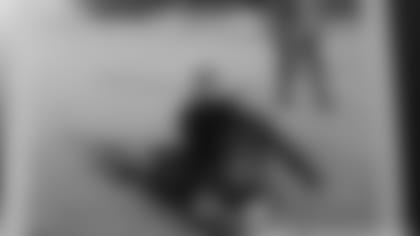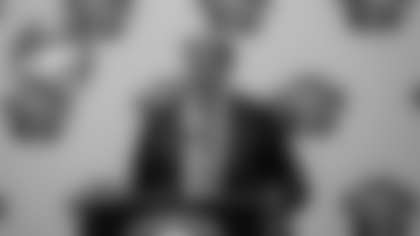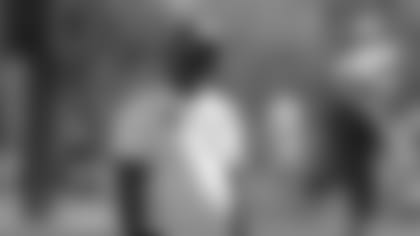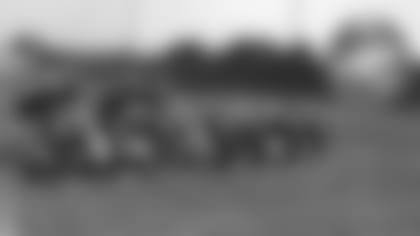*
1957 Stadium Dedication With Vannieuwenhoven Farm in Foreground**
The Vannieuwenhovens had a farm
E-I-E-I-O**
And on their farm they had a …*
As corny as that might be, there are enough i's, e's and o's in Vannieuwenhoven to rationalize playing on the words of the "Old MacDonald" nursery rhyme as a lead-in to yet another only-in-Green Bay story.
Because "on their farm," the Vannieuwenhovens had a pro football stadium adjoining their backyard; or, to reverse the wording, what is now Lambeau Field had a farm in its parking lot.
Tonight, when the Packers play host to the Chicago Bears, it will be one day shy of the 60th anniversary of the dedication of what was then officially named Green Bay City Stadium.

Plowing of the Farm by City Workers to Prepare for Construction
The stadium was dedicated on Sept. 29, 1957, when the Packers climaxed one of the most festive weekends in the history of Green Bay with a 21-17 victory over the Bears, their archrivals since the 1920s.
While the 32,154-seat stadium that was filled to capacity that day would seem barebones today compared to even some of the high school football palaces in Texas, then NFL commissioner Bert Bell was on hand and so impressed he gushed after the game, "The dedication of this stadium today is the greatest thing that has ever happened in professional football."
With nine of the other 11 NFL teams playing in Major League Baseball parks and all of the other teams' stadiums at the time built before 1931, new City Stadium – as almost everyone called it – was innovative and big-league.
Notwithstanding the decades-old farm in its backyard.
Don Vannieuwenhoven lived there when the stadium was dedicated and stayed put for approximately six more years.
His property extended more than 600 feet along the eastern edge of Ridge Road and roughly 185 feet deep toward the stadium's west gates.
Vannieuwenhoven lived in a wood-framed, one-story farmhouse with two bedrooms and an unfinished second level. Built by his parents in the late 1930s, the property also included the original barn with a second barn built later attached to it. There also was a machine shed, a chicken coup and a large garden.
By the time the stadium was dedicated, there were no cows to milk, no chickens laying eggs and no pigs standing at a trough. They had been moved less than a year earlier.

Don Vannieuwenhoven Skating With Daughters Vicky & Pam
Victor and Florence Vannieuwenhoven, Don's parents, sold the property the city of Green Bay settled on as the site for its new stadium in August 1956. At the time, the Vannieuwenhoven farm stretched from Ridge Road east almost to Gross Avenue (now Holmgren Way) and from Highland Avenue (now Lombardi Avenue) south to Valley View Lane, according to Don. There was no Oneida Street, south of Highland, he added.
"My dad was a shrewd businessman," said Don. "He said, 'No, I'm going to hang onto this farm. You can have the fifty some acres, but I'm going to keep these three and he did.'"
Victor and Florence purchased another smaller farm near Austin Straubel Field, Green Bay's airport, and moved out soon after the sale was completed. They took with them their herd of about 25 to 30 Guernseys, as well as some chickens and pigs.
Don, an only child, moved back in. He grew up on the farm, left when he got married in 1953 and returned in time to watch the construction of the stadium.
City workers started cutting pasture fence and surveying the property on Oct. 11, 1956. Digging to shape the bowl started soon after. Construction didn't start until after the Green Bay City Council sold the $960,000 bond issue on Feb. 5, 1957, but the stadium was built in roughly seven months and ready for the NFL's opening weekend.
Victor and Florence were offered season tickets by the Packers, but turned them down, Don said. He said his parents preferred to listen to the games on radio or watch them on TV.
Don, who had never gone to a game at old City Stadium, the Packers' former home, didn't buy tickets, either.
He decided he'd be better off profiting off the Packers.
"We used to park cars," he explained. "Fifty cents a game."
Plus, he didn't need a ticket. The stadium gates would be left open when the ticket-takers were done working.
"Just about every time they played a home game, when we got done parking, we used to walk in and watch part of the game," said Don. "We stood in the aisle ways."
Does he remember anything about the first game, decided by a fourth-quarter touchdown pass from Babe Parilli to Gary Knafelc?
"No, other than some of the dignitaries driving by on Ridge Road," said Don. "I know they won, but I don't know by what score anymore."
In 1962, the Packers moved their offices from downtown Green Bay to the stadium. They built a two-story administrative building at the north end that was completed before training camp the next year. Their new locker room was larger than the one at the south end they had used for six seasons, and so were their training and equipment rooms. There also were plusher offices for staff, and more and larger meeting rooms.
That same year, nearly 4,000 temporary seats were added, increasing Green Bay City Stadium's capacity to more than 42,000.
By then, the Packers needed more parking and Don was ready to sell. He moved out even before the purchase was finalized in November 1963.
The house was moved to Golden Glow Road in De Pere and the Packers gained 432 more parking spaces. As the stadium grew into the hallowed ground it is today, Don and his family gained something that can't be measured.
"It's what I considered a monument to my family," said Don. "To have that built on our property, I thought was super. I don't think there's anybody who can brag about having such a spectacular place built in your backyard, on your property, which you farmed. To be personally involved is something special."















